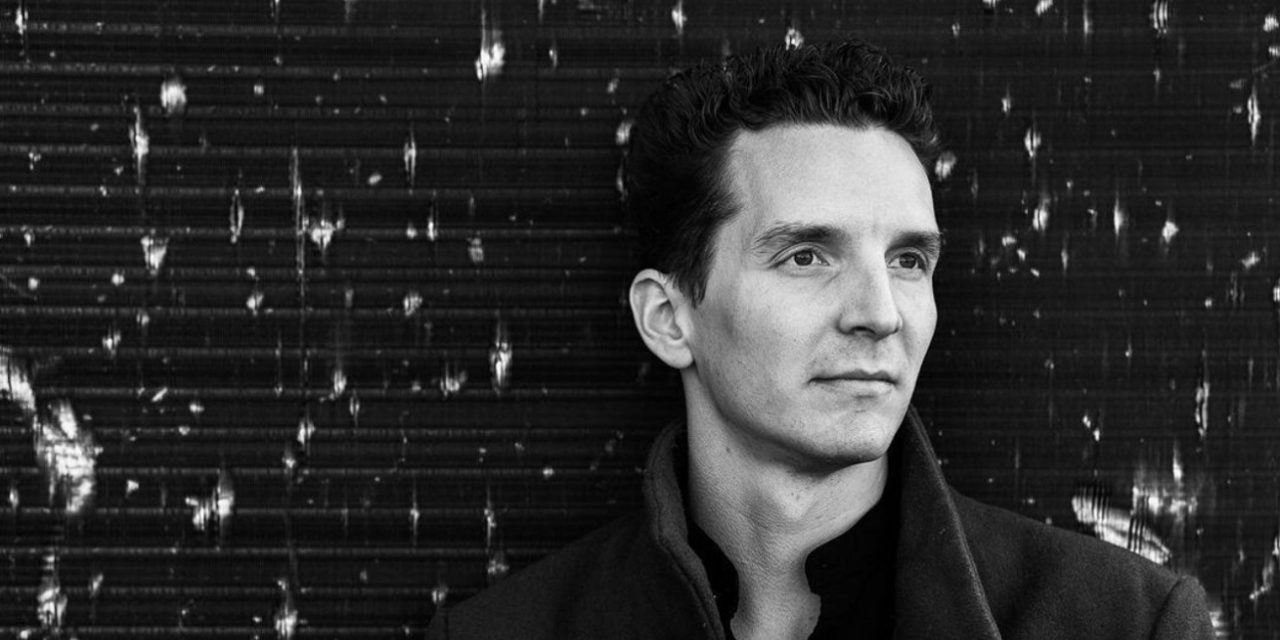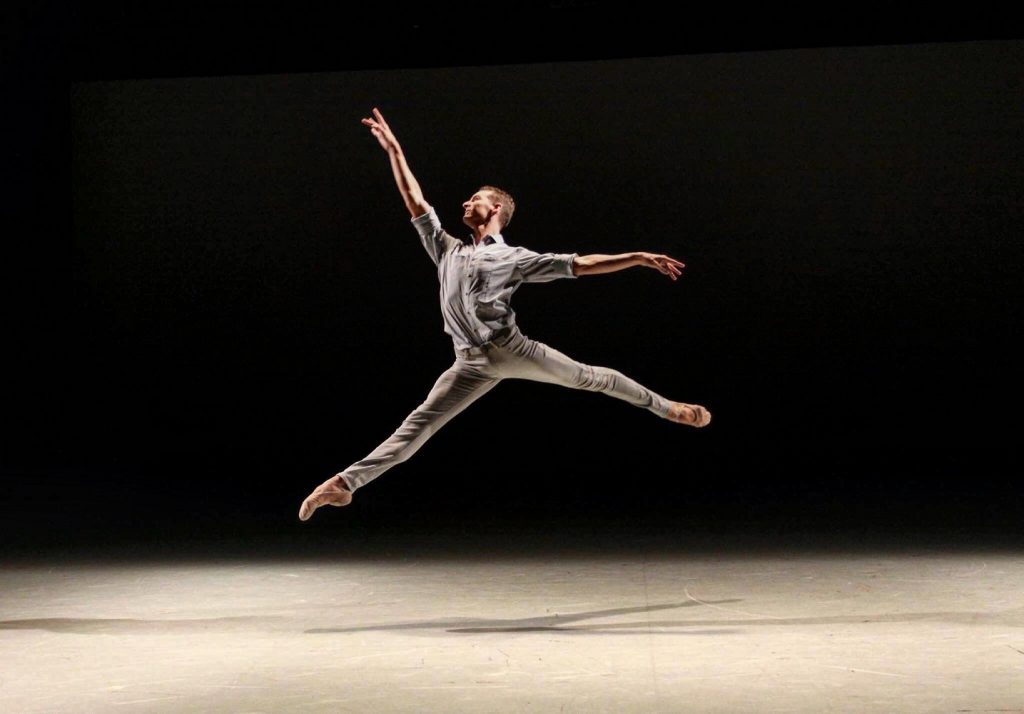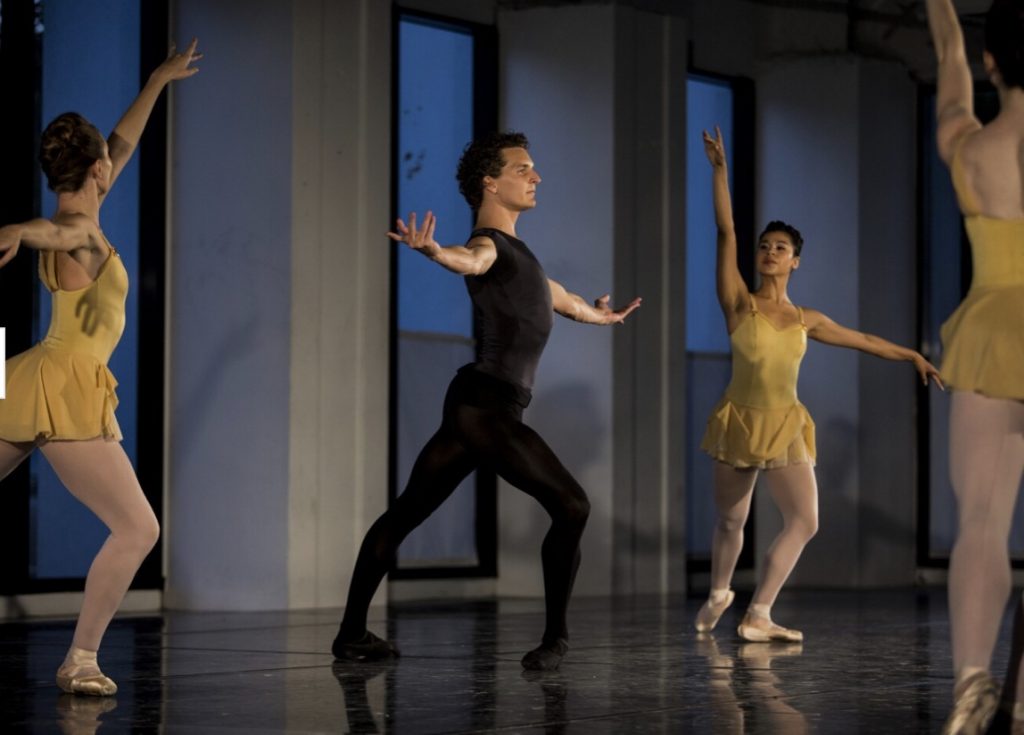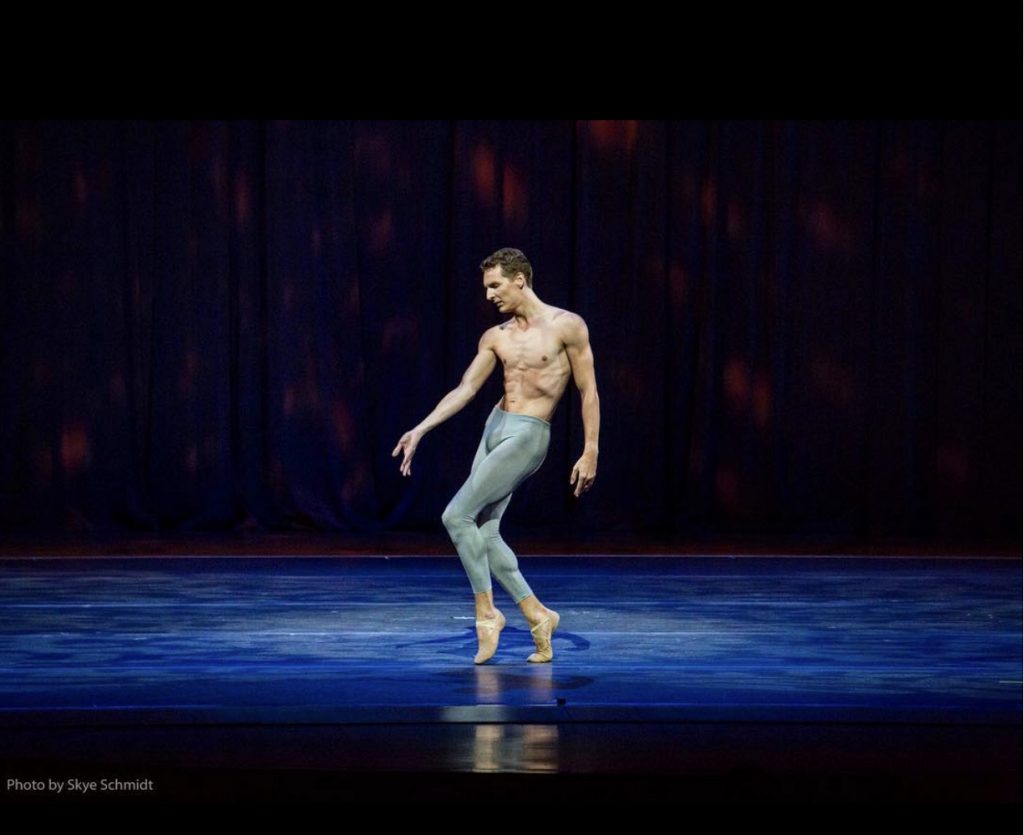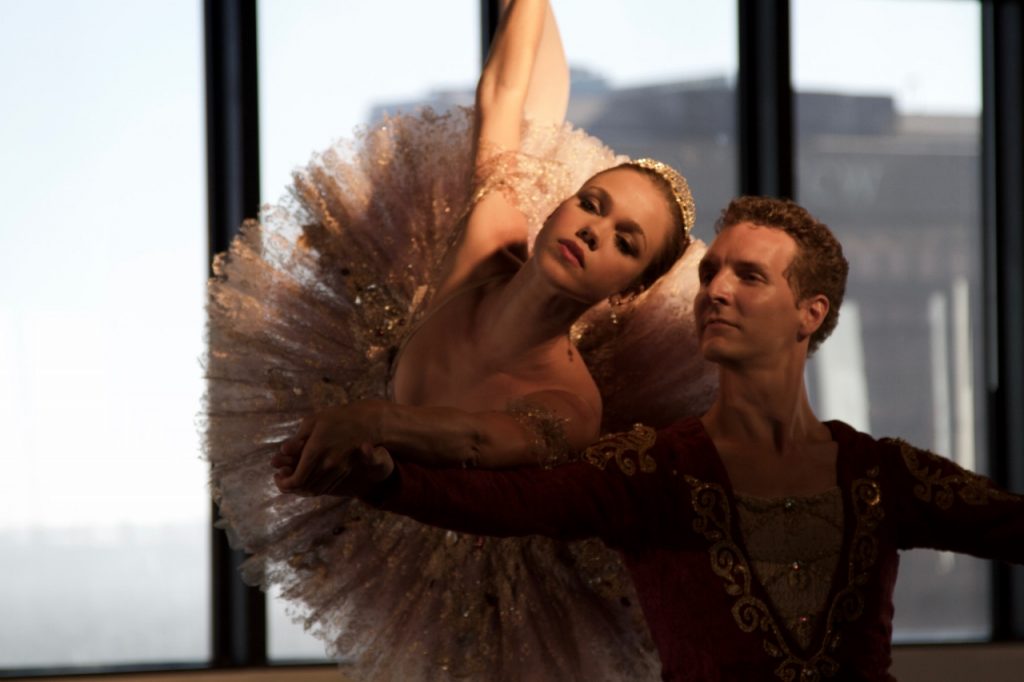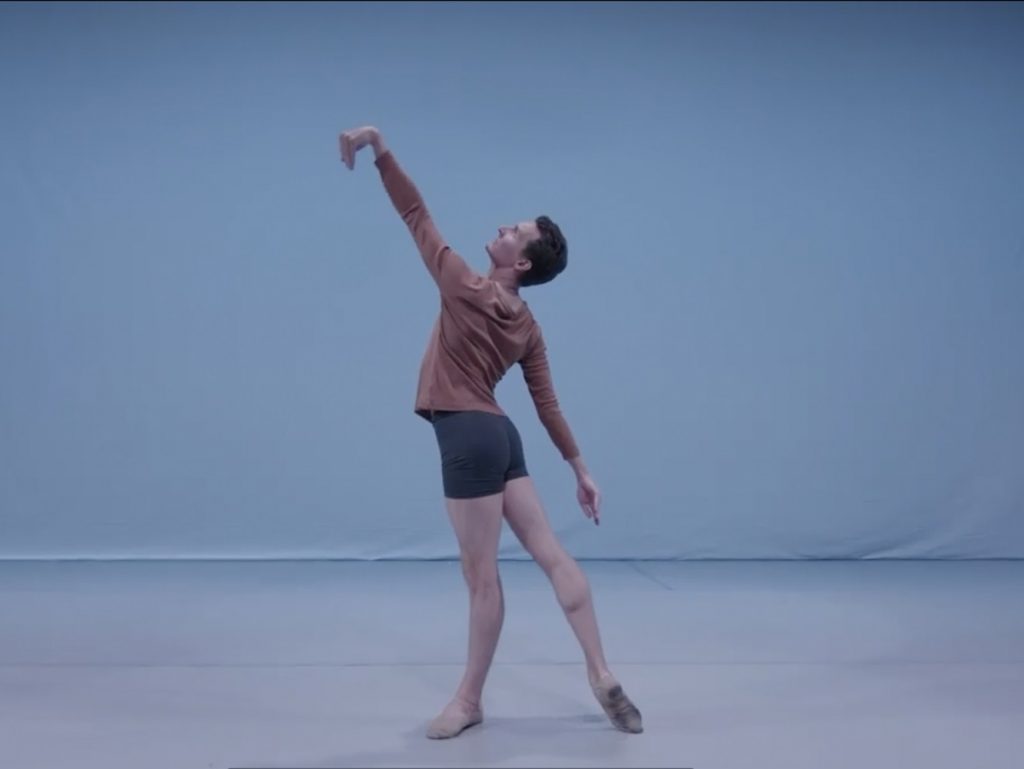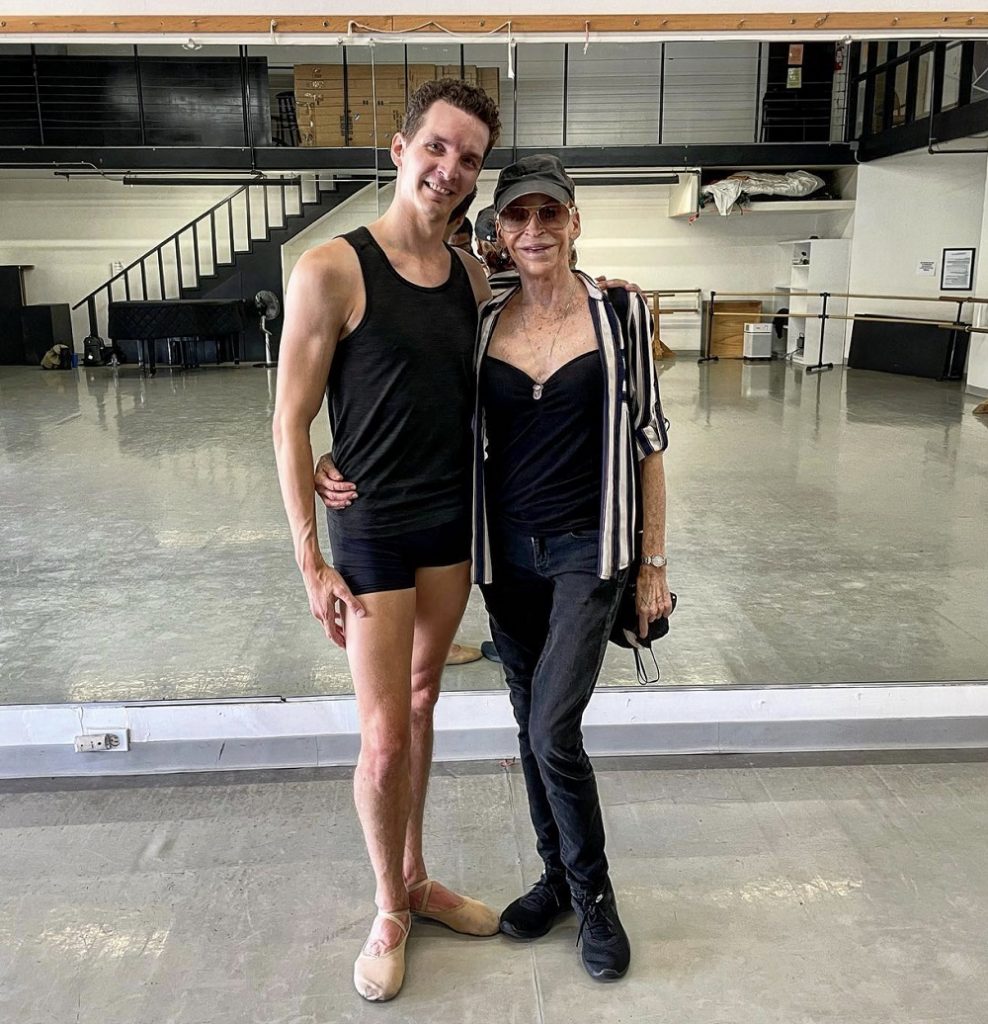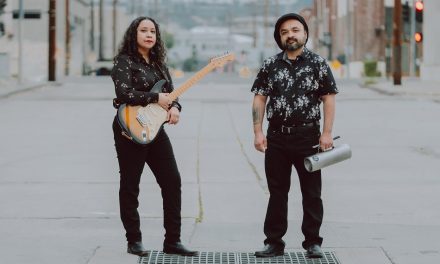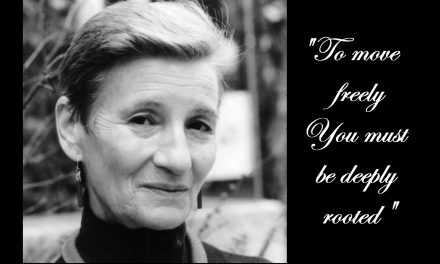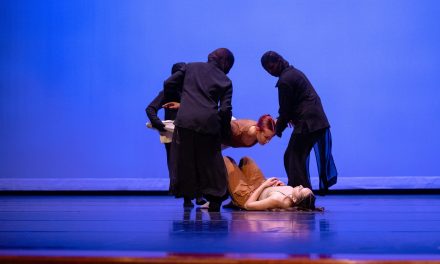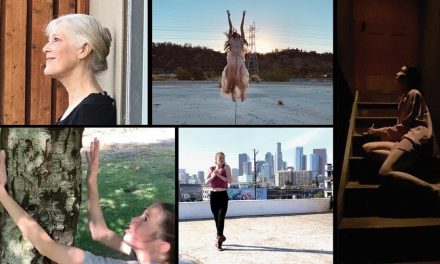On April 28, 2023, I had the pleasure of watching rehearsals, and meeting and interviewing two exciting dancers, Lyrica Woodruff (See interview) and Maté Szentes who will be Guest Artists for Westside Ballet’s MASTERS OF MOVEMENT Soirée on May 26th, at the Ely and Edythe Broad Stage. Both were so self-effacing and joyous, one could hardly believe with their reputations and experience that there was no trace of over-confidence. It was clear they loved their work, were artists, and more than understood the demands that that work involved. There was a genuine caring for each other, and for their mentor Patricia Neary and repetiteur of The Balanchine Trust, who was also delighted to be working with them. The brilliant Neary, former ballerina with New York City Ballet, was restaging “Stars and Stripes,” their chosen piece for the Masters of Movement Soirée. Tickets are on sale now.
After spending time with both Lyrica and Maté that afternoon, my decision was to separate the two, to give equal time to both. Maté’s quiet generous demeanor made me curious about his life and how he, as a dancer, made the choices he made throughout his career. I took the opportunity to find out more about this Hungarian-born professional dancer and choreographer. His practicality and steady thoughtful personality was a fascinating juxtaposition to the randomness of ballet in Los Angeles, a city that puts hardly any resources into the art of classical dance.
JD: Maté, I’m so curious, could you please tell me how you decided to become a Ballet Dancer?
MS: Well, I think it was my mom. She saw that I was making movements that were not just baby dancing, but more artistic. I was very young…[and she saw this] as soon as I was on my feet. My parents then put me into Jazz classes when I was about 5 or 6, before I even went to elementary school, and that teacher told my mom that I needed more ballet training because, I guess [of] my posture and stuff. My parents were very supportive, so they found me the best possible training.
JD: Was that training readily available to you?
MS: Well, I am not from a big town, so it was kind of hard. It was 3 hours away from my home. My parents had to take me to Budapest and I auditioned for the Hungarian Dance Academy (now Hungarian Dance University). The Hungarian Dance University is the main institution there. You know, it’s very different than here. You have to audition if you want to [become a professional dancer], and if they want you in the school, you stay… and it’s free tuition. The students get the best possible training there, It’s Vaganova… and it’s free.
JD: So your parents had to let you go so young. They sacrificed their beautiful son for his talent.
MS: Yes, I was very young and I had to live in the dorm. if I look back, I was excited and my experience was very different from my parents. In the beginning I don’t remember any sadness. But my parents tell me now…it was very hard on them. I didn’t know it, because they tried not to show it.
JD: Tell me what your days were like there at the school.
MS: In the school, you would take ballet classes, then Lunch, and back to Academics, then back to the dorms. I was in at 7 PM to do homework and then sleep. It was like a cycle.
JD: Did you ever want to come home?
MS: No, except for one time. At that point, maybe I was 14. I was like, I’m leaving! I think kids go through that. I probably had a year when I didn’t feel good about myself. But eventually I graduated from the school. And just like the Vaganova Academy in St. Petersburg, the best ones go from the school to the company, and then the rest just try to get a job. I got a contract with the Hungarian National Ballet which is basically like the biggest thing you can get.
I will be honest with you, I really wanted to come to the States. I did a couple of summer programs here, and then I was back to the National Ballet School. But for the summers, I would go to Charlotte, North Carolina, and a couple of other schools in the states. I got scholarships, and I was able to just study in America. I really wanted to come here. But then, you know what it’s like, half way through the last year in school they said, “Okay, you’re gonna be given a contract to the company,” It was very fast, lots of pressure. It was really rough. There they were saying, Why would you want to go to America? You know they don’t really know what it [ballet] is, and anything that they don’t know about is not as good as here. That was still very much the mindset.
So I stayed in the company for three years, and honestly, I don’t regret it. I really don’t, because I had some amazing experiences dancing for a national company. You know government funding. If I think back, there’s nothing like it. They could do full length ballets. The money was endless, and they could do that. Would anyone stop them? It was very interesting, especially looking back. So interesting.
JD: Then what was the draw to come here?
MS: The reason I wanted to come to the States is because I know it’s never perfect, but because I was always exposed to Vaganova-type training. Being introduced to Balanchine and the Balanchine training, especially, was well…because at the time when I came to the summer programs in Charlotte, they had Patricia McBride and Jean-Pierre Bonnefoux as the school and company directors…we were doing that whole thing.
Of course, all those teachers, it’s very eye-opening for many reasons. I loved it! I was like, oh, my God! Just imagine, like some kids, we had never been outside Europe. I was just living in one place… and coming to America is such a huge deal. I was hit in the face with a lot of stuff, and I wanted to come here because I wanted to learn more about the difference, not just in technique, but in general. I felt like I was able to enjoy dancing and had a little more freedom; opposed to constantly worrying about what you’re doing wrong, because that’s part of the Russian training. Yeah, it is so solid?
It’s different! Yes, I’m glad that I got certain basics, but coming here, when you just get stuck in that, you constantly worry and then you lose some of the freedom you need. I feel very lucky because I like that I was trained there. So yeah, I know the basics. But then I was able to get out of that and use that as a tool to be more free and dance big and travel and do all the things that I couldn’t do before.
JD: So please tell me more about your experience as a dancer on the West Coast.
MS: Yes, for 12 years I was a seasoned professional with Sacramento and Richmond ballet. I would also always have a lot of guesting in L.A. When I left Sacramento, or finished work with other companies, I would come down and do a guesting, make connections, and spend my summers in L.A. So I always knew I wanted to move to LA, but you know I still didn’t feel good about it. It’s an expensive place to live you know. I wanted to build myself up to a certain point, so I didn’t have to struggle, for me it was important, that trajectory. I didn’t want to establish something and then end up sleeping on a mattress on the floor. When the time came I thought, Okay, I think I’m ready. A lot of things were up in the air and it seemed like a good time. So two years ago I moved to L.A.
JD: So now you’re a freelancer?
MS: Yes, I decided that I’m just gonna be a freelancer in a way that I have places that I’m working for, like American Contemporary Ballet downtown, and I do a lot of things for Westside, their Nutcracker and gala with Lyrica now. I work in Orange County. Now, for me it’s project based.
Yes, I’m a freelancer. But I also have my home bases and it’s easy to set up my work, and sometimes it gets really dense. Even when I was a seasoned professional, I was always looking for times when I wasn’t working. I can now plan my year ahead… like I will say, When is the Westside show?
JD: It’s very smart.
MS: I try to be. I feel like LA is huge, and there’s so many commercial things you can do. When I moved here people would say, “Are you going to get an agent?.” But No, no, no, You can go down so many different avenues. There’s a lot of commercial TV, there will be stuff happening, but I try to be in as much classical and contemporary works as possible, and because of that, I find myself with a lot of work.
JD: Yes, there is so many different layers to your career.
MS: Yes, a lot of work… almost too much. It’s very good, but it’s almost overwhelming. I never had to turn work away. I try never to say no to anything when its offered, but it can be almost too much work. So now I can decide if I can, or even want to, do something. Thankfully. Then I can plan my year ahead. Like, I will say , “When is the Westside show?” because you know it’s coming up.
JD: Oh, so great! In a way, it’s very stable. And you do a lot with Westside? Had you worked with Pat Neary before?
MS: Yes, I do a lot here, and obviously I knew about Pat. I also knew a lot of people who knew Pat, but it was not until I moved here did I really get to know her. I was star-struck for the longest time. And then one day she came up to me, and said, “You are amazing” and I said, “No, I’m not!” (we laughed). It’s like a huge privilege for me, because you know she is really an icon and legend. That’s why I thought it was, I’m sure, like people meeting Beyoncé. Because I wasn’t born around it. I wasn’t in this circle. I’m an outsider, and I feel very fortunate because I was just pulled into it, and she just happened to really like me. And now we talk all the time, even year-round. This is the one time we are actually working with her like this. She would talk to me in the hallway before class and we would share stories and also email each other when she is in Europe. We know a couple people…mutual friends. It’s very special. I love this whole situation.
JD: So this ends up being a kind of “Home.”
MS: It is home, but as I said I have only been here for two years.
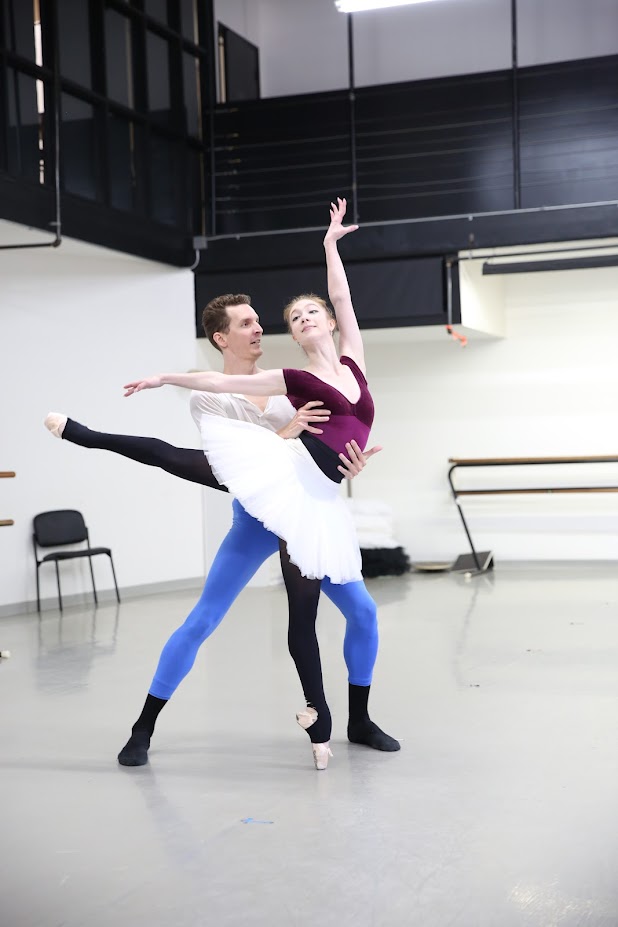
Westside Ballet – Maté Szentes and Lyrica Woodruff in rehearsal for Balanchine’s “Stars and Stripes” – Photo by Todd Lechtick
JD: Lyrica added, “Westside has that culture. Once you’re in the family you’re in the family for life.” We all shook our heads yes.
JD: And what are your plans for the future, Maté?
MS: I will try to keep going for another 5, 6, 7 years. We’ll see how my body feels, and if I can still look into the mirror and feel good about what I see, you know. It’s been working out so far. If something else, something different comes up from what I’m doing right now, I might end up jumping in and doing something else. But if not, thankfully I have a lot of work here, and I book up sometimes a year in advance for some things, or even more?
JD: Well, thank you Maté. It has been wonderful to speak to you about your training and career. I wish you much good fortune …and look forward to seeing you and Lyrica perform on May 26th. See you then.
#####
Maté Szentes will accompany Ms. Woodruff in Stars & Stripes. Mr. Szentes has danced with Richmond Ballet and American Contemporary Ballet, as well as Barak Ballet. (“Hungarian-born firebrand … impish with a bravura attack,.. a disruptive force..” – Los Angeles Times)
Mr. Szentes studied at the Hungarian Dance Academy and then danced for 3 years at the Hungarian National Ballet. In 2012 he moved to California and joined the Sacramento Ballet, and then joined the Richmond Ballet in 2015 where he danced principal and soloist roles in the company’s very versatile repertoire, working with world renowned choreographers such as Ma Cong, Val Caniparoli, Mariana Oliveira, Melissa Barak, Katarzyna Skarpetowska, Annabelle Lopez-Ochoa among many others. He’s also a permanent guest principal dancer with American Contemporary Ballet, Ballet Project OC, and Raiford Rogers Modern Ballet and he has been one of few dancers selected to participate at the very prestigious National Choreographers Initiative in 2016 and 2018. Since 2016 Mr. Szentes has also been choreographing and had his original works showcased in Virginia, California and New Mexico. Mr. Szentes is returning to partner with Ms. Woodruff for the second time at Westside’s Spring Soirée Special Performance.
#####
For more information about Westside Ballet, please visit their website.
TICKETS:
FRIDAY Soirée $100-300
SATURDAY Showcases $45
1-800-595-4849 (4TIX)
westsideballet.com/SpringTix
Special Group Rates Available for Groups of 15 or More.
For special group rates and ticket questions, please email: tickets@westsideballetcompany.org
Written by Joanne DiVito for LA Dance Chronicle.
Featured photo: Maté Szentes – Photo courtesy of the artist

